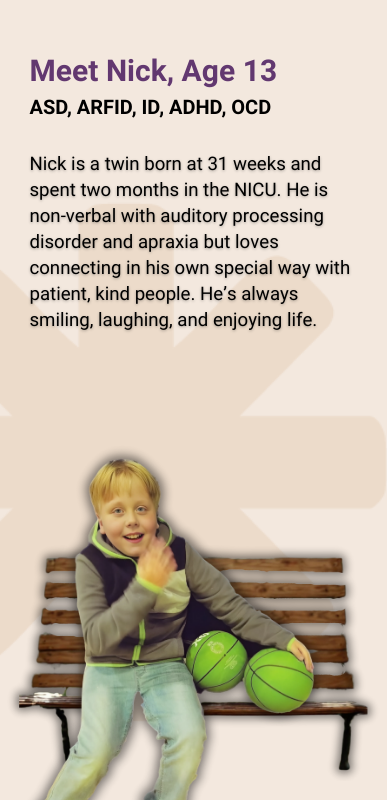Service Facilitator
What is a Service Facilitator?
Toddlers To Grandparents is a Consumer Directed Service(s) Facilitation (CDSF) provider for people screened and approved for a Virginia Medicaid Waiver or the EPSDT Program. If you choose to receive services through the Consumer-Directed (CD) model, we are here to help!
Our team of Service Facilitators is ready to assist with the plan of care necessary and the management training needed to be an Employer of Record (EOR).
Toddlers is a Medicaid-enrolled provider of CDSF services, therefore our Service Facilitator Team is responsible for supporting the person and family/EOR by ensuring the development and monitoring of the consumer-directed services plan of care, providing EOR management training, and completing ongoing review activities as required by DMAS for consumer-directed services.
What Exactly Do We Do?
Toddlers will provide service facilitation services in accordance with DMAS regulations, policies, and guidelines by:
- Developing the service plan with the individual receiving services and the EOR.
- Providing Fiscal Employer Agent (F/EA) with the appropriate forms to establish the EOR.
- Reviewing the Consumer Directed Employer Manual with the EOR.
- Submitting requests for service authorization to the appropriate service authorization contractor.
- Training the EOR on the required tasks of an employer.
- Documenting services as DMAS requires.
- Assisting the EOR when completing paperwork for the F/EA for the establishment of the EOR.
- Assisting the EOR when completing paperwork for the F/EA for the establishment of a CD Attendant.
- Conducting reassessment visits.
- Reviewing the Plan of Care for the individual receiving services, annually.


Core Qualities of a TTG Service Facilitator

This is accomplished
in a Two step process:
- Initial Intake
- Routine Reviews
The intake process for CDS under a Virginia Medicaid waiver is a structured series of steps designed to determine eligibility, assess needs, and establish services that align with the participant’s preferences and Medicaid guidelines.
1. Initial Contact and Eligibility Screening
The process begins when the participant or their representative expresses interest in the Consumer Directed (CD) model. Toddlers to Grandparents (TTG) will review the participant’s eligibility for waiver services, including Medicaid status, care level requirements, and residency.
2. Overview of the CD Model
The Service Facilitator (SF) provides a thorough explanation of the Consumer Directed Services model. This includes:
- Participant rights and responsibilities
- Role of the personal care attendant
- Tasks allowed under CDS
- Responsibilities of the Employer of Record (EOR)
- Budget management under the program
The SF will also train the EOR using the English / Spanish CD EOR Manual.
3. Needs Assessment
A comprehensive assessment evaluates the participant’s functional abilities and daily care needs. This includes activities of daily living such as bathing, dressing, eating, mobility, toileting, and more. The participant’s personal preferences and any safety or health considerations are discussed to help shape their care plan.
4. Developing the Plan of Care
Using the assessment results, an individualized Plan of Care is created. This document outlines:
- Care goals
- Required services and schedule
- Specific tasks for the personal care attendant
- Number of authorized care hours
- Any special accommodations or concerns
5. Selecting a Personal Care Attendant
Participants, as the Employer of Record (EOR), are guided through the process of selecting and hiring their personal care attendants. Attendants may include trusted family members or friends. If the participant is under 18 or unable to act as the EOR, a representative will be designated.
6. Role of the Fiscal Employer Agent (F/EA)
The F/EA assists with:
- Payroll processing
- Tax filings
- Budget tracking and reporting
- This ensures proper use of waiver funds and compliance with
- Medicaid guidelines.
7. Emergency Backup Planning
Participants must create a plan for emergency backup care to ensure continuity of services if the regular attendant is unavailable. This is an unpaid person who can assist in the event of an emergency.
8. Enrollment Completion
Once all documentation is finalized, the Plan of Care is approved by the authorizing agent, and agreements are signed, the participant is officially enrolled in the CDS program.
9. Start of Services and Ongoing Support
Services begin as outlined in the approved Plan of Care. Regular follow-ups and reviews are conducted by the SF to ensure that services continue to meet the participant’s needs effectively.
Routine Compliance Visits for Consumer Directed Services
Routine visits are an essential part of the Consumer Directed Services (CDS) model, ensuring that participants receive appropriate, quality care and that all services continue to meet their individual needs.
1. Pre-Visit Preparation
Before the visit, the Service Facilitator (SF) reviews the participant’s file, including the current Plan of Care, service notes, and any updates or incidents since the last visit.
2. Care Plan Review
During the visit, the SF reviews the existing Plan of Care with the participant to confirm that services remain relevant and effective. Any changes in medical status, daily functioning, medications, or personal preferences are noted and discussed.
3. Observation and Interaction
The SF may observe the participant and their personal care attendant(s) during routine activities. This helps assess the quality of interactions and the level of care being provided. The SF may ask both the participant and attendant questions to identify strengths, concerns, or areas for improvement.
4. Documentation Review
The visit includes a review of required service documentation, such as:
- Time logs/hours worked
- Task documentation
- Incident reports or notes on unusual events
- This ensures that records are complete and compliant with program guidelines.
5. Discussion of Needs and Challenges
The participant is encouraged to share any concerns, unmet needs, or suggestions for improving services. The SF may also assess whether attendants need additional training or whether the participant could benefit from additional resources or supports.
6. Health and Safety Check
The SF checks for any indicators of neglect, abuse, or unmet health and safety needs. This includes evaluating the participant’s environment and overall well-being.
7. Feedback and Recommendations
At the end of the visit, the SF offers feedback, addresses concerns raised during the visit, and recommends any necessary changes to the Plan of Care. The goal is to ensure services remain person-centered and responsive.
8. Closing and Follow-Up
The visit concludes with a summary of key points discussed, next steps, and the SF providing their contact information for future questions or support.
After the visit, the SF documents all findings and updates the participant’s records to reflect any changes or follow-up tasks.
Why It Matters
Routine visits help maintain high standards of care, ensure ongoing eligibility and compliance, and promote the participant’s overall well-being and satisfaction with services.
